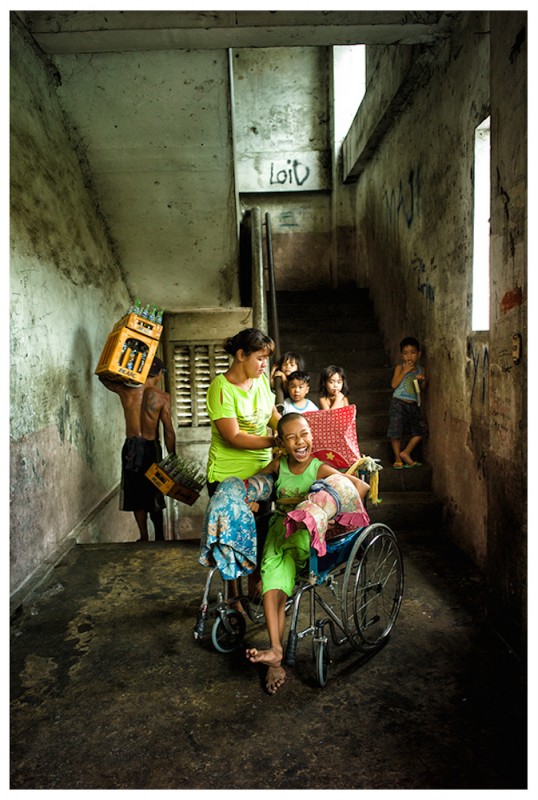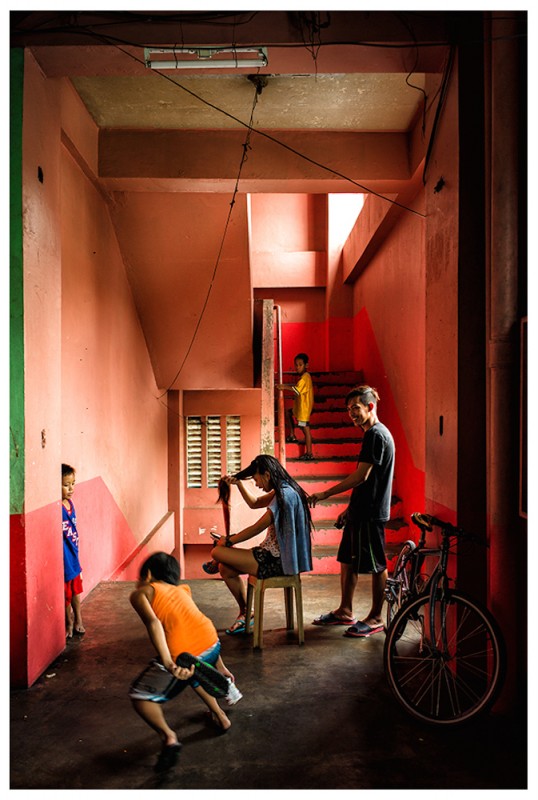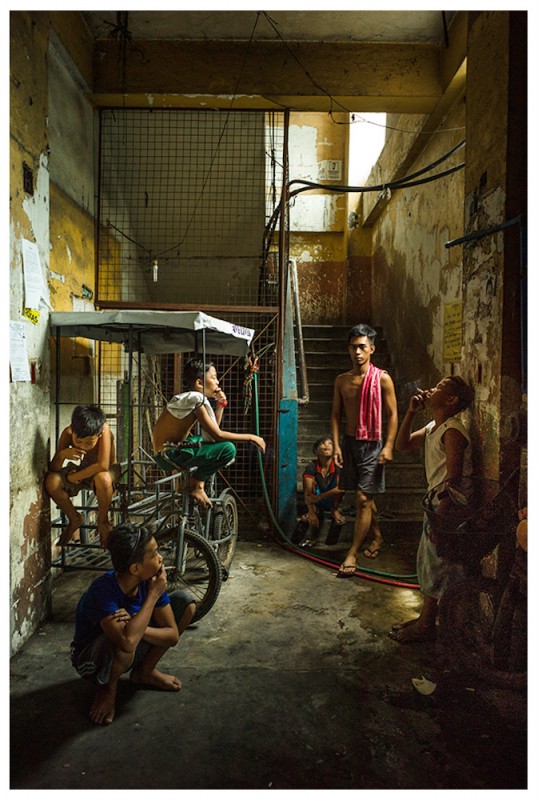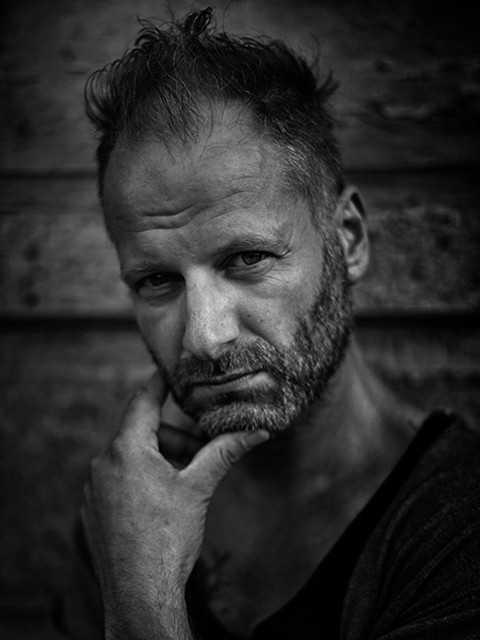On all Floors
On all Floors
Mariusz Janiszewski
August 23, 2016

Every year you travel to Manila for your reportages; you seem to be inspired by the tension between the misery, on the one hand, and a defiant joie de vivre, on the other. Do you still find enough subject matter in Philippine cities?
I don’t limit myself to Manila; I also visit other regions of the Philippines, and I’m always sure to find interesting subjects. Of course, the most relevant theme in that part of the world is the incredible openness and joie de vivre of the people there – so I believe that my Philippine adventure is far from over. But, at the same time, I’m thinking of other places and themes.
The project presented here deals with life as it unfolds in the staircases of an apartment block. Can you explain briefly why life takes places in the stairways rather than in the apartments or in public spaces? The stairways are obviously something in between the two.
Manila is a very densely populated city. The average number of inhabitants is over forty thousand per square kilometer. Consequently, there’s little room for private space. So the result is that everyday life moves into public spaces out of necessity, like on the streets or in the stairwells, because, in addition, the apartments are usually much too small for the large families.
In your photos, each individual floor in the staircases appear like a different stage, even though each floor is similar. Was that what appealed to you about this project?
When I visited the apartment blocks at Barangay 128, I noticed in particular the diversity of the scenes found on each different floor. My curiosity grew with every floor, and every time it was a surprise. So there was this diversity in places which, in fact, had the same structure. I wanted to document it by choosing a fixed picture format that was analogous to the uniformity of the location. Because I usually work in landscape format, but the situation was so different this time, I decided to use an alternative format; so I deliberately chose portrait format, because from the compositional aspect it really suited the locations, and because I otherwise rarely use it for documentary pictures.
In your reportages you usually photograph situations that emerge from movement. In this case it’s actually the contrary: you define the space to be photographed, and the situations then develop within that space. Was that the concept?
That’s true and it was a new experience for me – a very interesting one. In my other work the situation motif would allow me to spontaneously find a frame that suited the circumstances. This time I did it the other way round. I chose the frame first and let the situation develop within that frame, and then waited for the right moment. Yes, on this occasion, the compositional aspect came before the situational one.
The approach here is also interesting because the photography is documentary, yet by defining a set it somehow follows the principles of commercial photography. You are a commercial photographer who, once a year, becomes a reportage photographer doing the contrary to what he normally does. Is that the right way of putting it? Have these two worlds now come together or was this a singularity because the subject demanded it?
Yes, in truth they are two completely different worlds. As I’ve already mentioned, however, for this kind of work they can complement each other in quite an interesting way. In the case of documentary photography, there is always a certain emotional connection with whatever you are photographing, while, with commercial photography, composition and arrangement tend to be done more analytically and from a certain distance. In that case, every small detail plays a role in the build up. I hope that I managed to do a good job at combining the two approaches, and that, despite the compositional component in the pictures, the documentary aspect outweighs it. Of course, in the future I will continue to work as I have till now, but I will also keep my eyes open in case there are subjects where a combined approach is appropriate.
What do you photograph your reportages with and which equipment did you use for this subject?
Only a Leica M9 and Summilux-M 35mm.
Read the full article in LFI 6/2016.
Mariusz Janiszewski+-
Born in 1975 in Warsaw, where he works today as a commercial photographer. His passion is documentation and reportage, for which he has received a number of awards, including the Grand Press Photo 2013, 2014, 2015, as well as being a finalist in 2016, and the PX3 in 2015 and 2016. More





